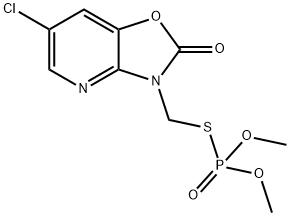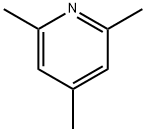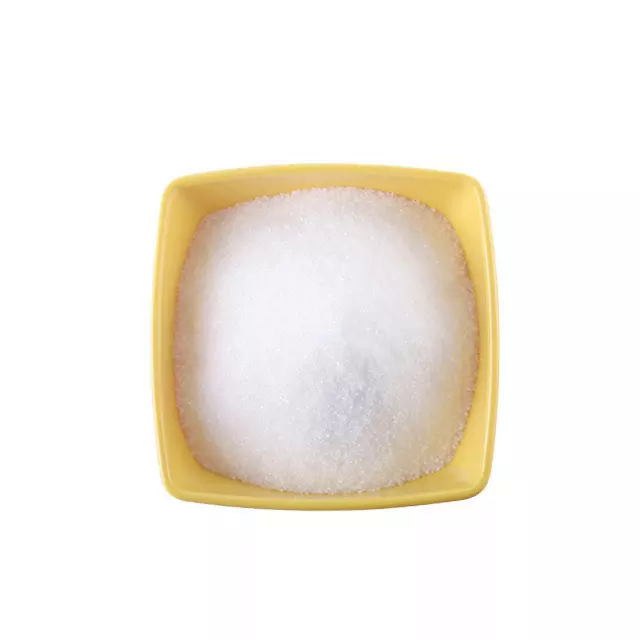Mirtazapine
Synonym(s):1,2,3,4,10,14b-Hexahydro-2-methylpyrazino[2,1-a]pyrido[2,3-c][2]benzazepine
- CAS NO.:85650-52-8
- Empirical Formula: C17H19N3
- Molecular Weight: 265.35
- MDL number: MFCD00865427
- EINECS: 288-060-6
- SAFETY DATA SHEET (SDS)
- Update Date: 2024-11-19 15:53:33

What is Mirtazapine?
Absorption
The absorption of this drug is rapid and complete. Due to first pass metabolism in the liver and metabolism in the gut wall, absolute bioavailability is about 50%. Peak blood concentrations are attained within about 2 hours after an oral dose. Food has little effect on the absorption of mirtazapine, and no dose adjustment is required if it is taken with food. Steady-state levels are achieved by about 5 days after the initial dose. Mirtazapine pharmacokinetics vary across gender and age range. Females and the elderly population have been shown to have higher blood concentrations in comparison to males and younger adults.
Toxicity
LD50
Oral LD50 was 830 mg/kg in male Swiss mice 24 hours after being administered mirtazapine.
Overdose information
Activated charcoal should be administered during an overdose to absorb excess mirtazapine. General supportive therapy should be employed, including maintenance of an adequate airway, oxygen therapy, and ventilation therapy. Vital signs and cardiac rhythm must be monitored. It is not advisable to induce vomiting. Gastric lavage with a large-bore orogastric tube with proper protection of the airway is recommended . There is no antidote for mirtazapine available currently. Consider the possibility of mirtazapine combined with other drugs in an overdose and ensure to contact the local poison control center for guidance on management.
Carcinogenesis
At higher than normal doses, mirtazapine increased the incidence of hepatocellular adenomas and carcinomas in male mice. The highest doses administered to the mice were about 20 and 12 times the maximum recommended human dose (MRHD). Hepatocellular tumors and thyroid follicular adenoma/cystadenomas in male rats occurred at an increased rate at a higher mirtazapine dose (60 mg/kg/day). In female rats, both the medium (20 mg/kg/day) and higher (60 mg/kg/day) doses of mirtazapine increased the rate of hepatocellular adenomas. The relevance of these findings in humans is not known at this time.
Impairment of Fertility
Mirtazapine was administered to rats at doses reaching 100 mg/kg (equivalent to 20 times the maximum recommended human dose) in a fertility study. There was no impact on mating and conception, however, there was a disturbance of reproductive (estrous) cycling at higher doses. These doses were measured to be at least 3 times the maximum recommended human dose. Loss of fetus before implantation in the uterus occurred when doses equivalent to 20 times the maximum recommended dose were administered.
Use in pregnancy
This drug is categorized as a pregnancy category C drug. No adequate studies in pregnant women have been conducted. In rats, an increased rate of post-implantation demise occurred with mirtazapine administration. Additionally, an increase in deaths of rat pups during the first 3 days of lactation with a decrease in pup birth weight was noted. Studies on animals are not always relevant to human response. Mirtazapine should be used during pregnancy only if the clinical need outweighs the possible risks to the fetus.
Use in nursing
Whether this drug is excreted in human milk is unknown. Many drugs are found excreted in human breast milk, therefore caution is advised if this drug is used during nursing.
Chemical properties
White Solid
The Uses of Mirtazapine
Mirtazapine (Remeron, Avanza) is a potent tetracyclic antidepressant. Mirtazapine (Remeron, Avanza) used primarily in the treatment of depression. It is also sometimes used as a hypnotic, antiemetic, and appetite stimulant, and for the treatment of anxiet
The Uses of Mirtazapine
Mirtazapine is an α2-Adrenergic blocker; analogue of Mianserin. Antidepressant.
Indications
This drug is indicated for the treatment of major depressive disorder and its associated symptoms.
Mirtazapine has been used off-label for a variety of conditions including panic disorder, generalized anxiety disorder, dysthymia, tension headaches, hot flushes, post-traumatic stress disorder (PTSD), sleep disorders, substance abuse disorders, and sexual disorders, among others.
Background
Mirtazapine is a tetracyclic piperazino-azepine antidepressant agent that was initially approved for the treatment of major depressive disorder (MDD) in the Netherlands in 1994. This drug was first manufactured by Organon Inc., and received FDA approval in 1997 for the treatment of major depressive disorder. The effects of this drug may be observed as early as 1 week after beginning therapy.
In addition to its beneficial effects in depression, mirtazapine has been reported to be efficacious in the off-label management of various other conditions. It may improve the symptoms of neurological disorders, reverse weight loss caused by medical conditions, improve sleep, and prevent nausea and vomiting after surgery.
What are the applications of Application
Mirtazapine is a potent SR-2, SR-3, and Histamine H1 receptor antagonist
Definition
ChEBI: Mirtazapine is a benzazepine and a tetracyclic antidepressant. It has a role as an alpha-adrenergic antagonist, a serotonergic antagonist, a histamine antagonist, an anxiolytic drug, a H1-receptor antagonist and a oneirogen.
brand name
Remeron (Organon).
General Description
Mirtazapine is a tetracyclic antidepressant marketed under the trade names Remeron?, Avanza, or Zispin for treatment of depression.?This Certified Spiking Solution? is suitable for LC/MS or GC/MS applications in forensic analysis, clinical toxicology, or urine drug testing.
Biological Activity
Antidepressant agent; potent 5-HT 2 , 5-HT 3 and histamine H 1 receptor antagonist and moderately potent α 2 -adrenoceptor antagonist (pK i values are 8.05, ~ 8.1, 9.3 and 6.95 respectively). Enhances noradrenalin (NA) release in rat brain via inhibition of α 2 -adrenergic autoreceptors and displays only weak affinity for monoamine transporters (pK i values are 5.6, < 5 and < 5.1 for inhibition of NA, dopamine and 5-HT uptake respectively). Increases hippocampal NA and 5-HT levels in rats following systemic administration in vivo .
Biochem/physiol Actions
Mirtazapine is a noradrenergic and specific serotonergic antidepressant (NaSSA). Mirtazapine agonizes selective adrenergic and serotonergic receptors so that both NE release and 5-HT1A mediated serotonergic signaling are increased.
Pharmacokinetics
General effects and a note on suicidality
Mirtazapine is effective in treating moderate to severe depression and treats many symptoms normally associated with this condition. These symptoms may include disturbed sleep, lack of appetite, and anhedonia, in addition to anxiety.. It is important to note that suicidal ideation and behavior may emerge or increase during treatment with mirtazapine, as with any other antidepressant. This risk is especially pronounced in younger individuals. Patients, medical professionals, and families should monitor for suicidal thoughts, worsening depression, anxiety, agitation, sleep changes, irritable behavior, aggression, impulsivity, restlessness, and other unusual behavior when this drug is taken or the dose is adjusted. Do not administer mirtazapine to children. When deciding to prescribe this drug, carefully consider the increased risk of suicidal thoughts and behavior, especially in young adults.
Effects on appetite and weight gain
In addition to the above effects, mirtazapine exerts stimulating effects on appetite, and has been used for increasing appetite and decreasing nausea in cancer patients. Some studies and case reports have shown that this drug improves eating habits and weight gain in patients suffering from anorexia nervosa when administered in conjunction with psychotherapy and/or other psychotropic drugs. In a clinical trial, women with depression experienced a clinically significant mean increase in body weight, fat mass, and concentrations of leptin when treated with mirtazapine for a 6-week period, with a lack of effect on glucose homeostasis.
Effects on sleep
The use of mirtazapine to treat disordered sleep has been leveraged from its tendency to cause somnolence, which is a frequently experienced adverse effect by patients taking this drug. Mirtazapine has been shown to exert beneficial effects on sleep latency, duration, and quality due to its sedating properties. Insomnia is a common occurrence in patients with depression, and mirtazapine has been found to be efficacious in treating this condition.
Clinical Use
Antidepressant
Veterinary Drugs and Treatments
Currently, the only FDA approved indication for mirtazapine is
depression in humans. Reported veterinary uses include treatment
of chemotherapy-induced nausea and vomiting (CINV); anorexia
associated with renal failure (azotemia), congestive heart failure,
gastro-intestinal disorders, liver disease, or neoplasia. Other uses
suggested include stress induced diseases; insomnia; post-pyometra
symptoms; and post-operative inappetance. Studies have shown
that mirtazapine also alleviated sleep apnea in rats and humans.
There are case reports published in human literature of mirtazapine
use as treatment for non-mechanical vomiting after gastric
bypass, CINV, obsessive-compulsive disorder, nocioception
and chronic pain, migraine headache prophylaxis, anti-psychotic
induced akathisia, idiopathic nausea and vomiting, serotonin syndrome
induced nausea, anorexia, irritable bowel syndrome, resistant
hyperemesis gravidarum, and for the treatment of negative
symptoms of schizophrenia. Studies in rats have also shown that
mirtazapine significantly improves memory.
Drug interactions
Potentially hazardous interactions with other drugs
Alcohol: increased sedative effect.
Antidepressants: possibly increased risk of
serotonergic effects with fluoxetine, fluvoxamine or
venlafaxine; CNS excitation and hypertension with
MAOI and moclobemide - avoid.
Antimalarials: avoid with artemether and
lumefantrine and piperaquine with artenimol.
Methylthioninium: risk of CNS toxicity - avoid if
possible.
Metabolism
Mirtazapine is heavily metabolized in humans. Demethylation and hydroxylation and subsequent glucuronide conjugation are the major pathways by which mirtazapine is metabolized. Data from in vitro studies on human liver microsomes show that cytochrome 2D6 and 1A2 lead to the formation of the 8-hydroxy metabolite of mirtazapine. The CYP3A enzyme metabolizes this drug into its N-desmethyl and N-oxide metabolites. There are various other unconjugated metabolites of this drug that are pharmacologically active, but are measured in the blood at limited concentrations.
Metabolism
Extensively metabolised in the liver via CYP2D6, CYP1A2, and CYP3A4. The major biotransformation pathways are demethylation and oxidation followed by glucuronide conjugation. The N-desmethyl metabolite is pharmacologically active. Elimination is via urine and faeces (15%).
storage
Store at RT
Properties of Mirtazapine
| Melting point: | 114-116°C |
| Boiling point: | 432.4±45.0 °C(Predicted) |
| Density | 1.22±0.1 g/cm3(Predicted) |
| Flash point: | 9°C |
| storage temp. | 2-8°C |
| solubility | DMSO: ~8 mg/mL, soluble |
| form | solid |
| pka | 8.10±0.20(Predicted) |
| color | white |
| CAS DataBase Reference | 85650-52-8(CAS DataBase Reference) |
Safety information for Mirtazapine
| Signal word | Warning |
| Pictogram(s) |
 Exclamation Mark Irritant GHS07 |
| GHS Hazard Statements |
H302:Acute toxicity,oral H336:Specific target organ toxicity,single exposure; Narcotic effects |
| Precautionary Statement Codes |
P261:Avoid breathing dust/fume/gas/mist/vapours/spray. P264:Wash hands thoroughly after handling. P264:Wash skin thouroughly after handling. P270:Do not eat, drink or smoke when using this product. P271:Use only outdoors or in a well-ventilated area. P301+P312:IF SWALLOWED: call a POISON CENTER or doctor/physician IF you feel unwell. |
Computed Descriptors for Mirtazapine
Mirtazapine manufacturer
Sun Pharmaceutical Industries Ltd
Adeep Life Sciences Pvt Ltd
Megafine Pharma
Basil Drugs AND Pharmaceuticals Pvt Ltd
Almon Industries
New Products
Tert-butyl bis(2-chloroethyl)carbamate 4-Methylphenylacetic acid N-Boc-D-alaninol N-BOC-D/L-ALANINOL 3-Morpholino-1-(4-nitrophenyl)-5,6-dihydropyridin- 2(1H)-one Furan-2,5-Dicarboxylic Acid Tropic acid DIETHYL AMINOMALONATE HYDROCHLORIDE 1,1’-CARBONYLDIIMIDAZOLE R-2-BENZYLOXY PROPIONIC ACID 1,1’-CARBONYLDI (1,2-4 TRIAZOLE) N-METHYL INDAZOLE-3-CARBOXYLIC ACID (2-Hydroxyphenyl)acetonitrile 4-Bromopyrazole 5-BROMO-2CYANO PYRIDINE 5,6-Dimethoxyindanone 5-broMo-2-chloro-N-cyclopentylpyriMidin-4-aMine 2-(Cyanocyclohexyl)acetic acid 4-methoxy-3,5-dinitropyridine 2-aminopropyl benzoate hydrochloride 1-(4-(aminomethyl)benzyl)urea hydrochloride diethyl 2-(2-((tertbutoxycarbonyl)amino) ethyl)malonate tert-butyl 4- (ureidomethyl)benzylcarbamate Ethyl-2-chloro((4-methoxyphenyl)hydrazono)acetateRelated products of tetrahydrofuran








You may like
-
 Mirtazapine 98%View Details
Mirtazapine 98%View Details -
 Mirtazapine 61337-67-5 / 85650-52-8 98%View Details
Mirtazapine 61337-67-5 / 85650-52-8 98%View Details
61337-67-5 / 85650-52-8 -
 61337-67-5 / 85650-52-8 98%View Details
61337-67-5 / 85650-52-8 98%View Details
61337-67-5 / 85650-52-8 -
 61337-67-5 / 85650-52-8 98%View Details
61337-67-5 / 85650-52-8 98%View Details
61337-67-5 / 85650-52-8 -
 Mirtazapine 61337-67-5 / 85650-52-8 98%View Details
Mirtazapine 61337-67-5 / 85650-52-8 98%View Details
61337-67-5 / 85650-52-8 -
 Mirtazapine 98%View Details
Mirtazapine 98%View Details -
 Mirtazapine 99%View Details
Mirtazapine 99%View Details -
 61337-67-5 / 85650-52-8 99%View Details
61337-67-5 / 85650-52-8 99%View Details
61337-67-5 / 85650-52-8